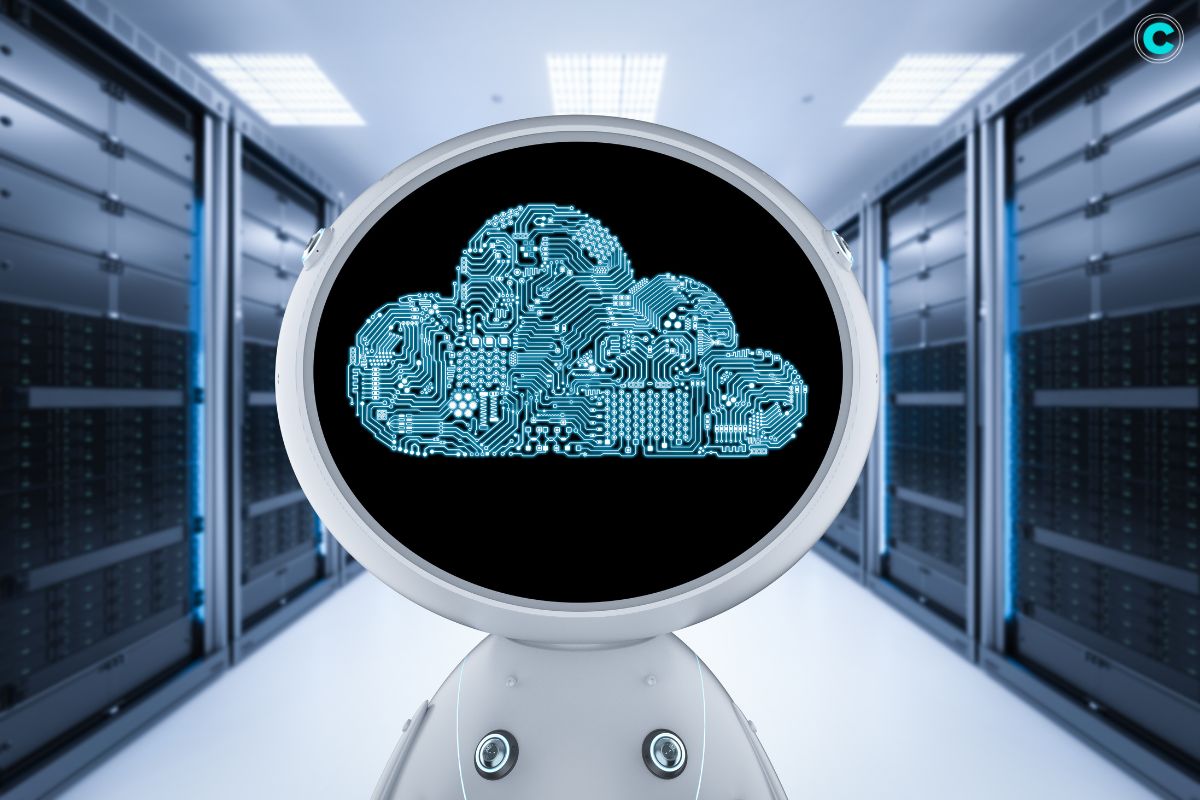The Ultimate Guide to a Seamless Data Migration Framework
The Ultimate Guide to a Seamless Data Migration Framework
Blog Article
The Ultimate Guide to a Seamless Data Migration Framework

In today’s data-driven world, the ability to move data seamlessly between different systems is crucial for maintaining efficiency and competitiveness. This comprehensive guide delves into the intricacies of a data migration framework, providing you with the knowledge and tools needed to execute a successful data migration. Whether you’re upgrading systems, consolidating databases, or moving to the cloud, understanding and implementing a robust framework is essential for ensuring data integrity, minimizing downtime, and reducing risks.
What is Data Migration?
In the simplest terms, data migration is the process of moving data from one location to another. This could involve transferring data between different types of storage systems, databases, or applications. It’s a crucial task for organizations looking to upgrade systems, consolidate databases, or shift to cloud-based solutions.
Importance of a Data Migration Framework
A data migration framework is essential because it provides a structured approach to managing this complex process. It helps ensure that data is accurately and securely transferred without causing significant downtime or data loss. Think of it as a roadmap that guides you through the intricate journey of data transfer, minimizing risks and maximizing efficiency.
Key Components
1. Assessment and Planning
Before diving into the data migration process, it’s vital to conduct a thorough assessment. This involves understanding the current data landscape, identifying data sources, and planning the migration strategy. Proper planning helps in anticipating potential challenges and devising solutions in advance.
2. Data Extraction
Data extraction is the process of retrieving data from the source systems. This step requires precision to ensure all necessary data is captured without any errors or omissions. The extracted data then becomes the raw material for the subsequent stages of migration.
3. Data Transformation
Once the data is extracted, it often needs to be transformed to fit the format required by the target system. This could involve data cleaning, normalization, and restructuring. Effective data transformation ensures compatibility and usability in the new environment.
4. Data Loading
This is the stage where transformed data is loaded into the target system. Data loading must be done methodically to prevent data corruption and ensure integrity. It’s like moving into a new house – everything must be placed correctly for smooth functioning.
5. Validation and Testing
After loading the data, it’s crucial to validate and test it to ensure it meets the expected standards. This involves checking for data completeness, accuracy, and consistency. Testing helps in identifying any issues that need to be resolved before the system goes live.
6. Documentation and Monitoring
Proper documentation of the migration process is essential for future reference and compliance. Monitoring during and after the migration helps in tracking progress and quickly addressing any issues that arise.
Types of Data Migration
1. Storage Migration
Storage migration involves moving data from one storage system to another. This could be due to the need for more storage space, better performance, or cost efficiency.
2. Database Migration
Database migration entails transferring data between different database management systems (DBMS). This might be necessary when upgrading to a more advanced DBMS or consolidating multiple databases.
3. Application Migration
Application migration involves moving data and applications to a new computing environment. This is often done to enhance performance, security, or user experience.
4. Cloud Migration

Benefits of a Data Migration Framework
1. Ensures Data Integrity
A structured data migration framework helps maintain data integrity throughout the migration process. It ensures that data is accurately and securely transferred without any loss or corruption.
2. Minimizes Downtime
Effective planning and execution minimize the downtime associated with data migration. This ensures that business operations continue smoothly with minimal disruption.
3. Reduces Risks
By following a systematic approach, a data migration framework helps in identifying and mitigating potential risks. This includes addressing data compatibility issues, security concerns, and data loss risks.
4. Enhances Performance
A well-executed data migration can enhance system performance by ensuring that data is organized, clean, and efficiently accessible in the new environment.
Challenges in Data Migration
1. Data Compatibility Issues
One of the primary challenges in data migration is ensuring compatibility between the source and target systems. Differences in data formats and structures can cause issues during the transfer.
2. Data Loss Risks
There’s always a risk of data loss during migration. This can be due to errors in data extraction, transformation, or loading processes.
3. Security Concerns
Data migration involves transferring sensitive information, which can be vulnerable to security breaches. Ensuring data security during the migration process is paramount.
4. Downtime and Business Disruption

Best Practices for Data Migration
1. Comprehensive Planning
Comprehensive planning is the cornerstone of a successful data migration. It involves defining the scope, setting objectives, and developing a detailed migration plan.
2. Stakeholder Involvement
Involving all relevant stakeholders ensures that the migration process aligns with business goals and addresses the needs of different departments.
3. Incremental Migration
Migrating data incrementally rather than all at once helps in managing risks and ensuring smoother transitions. It allows for testing and validation at each stage.
4. Regular Testing
Regular testing throughout the migration process helps in identifying and resolving issues early. It ensures that the data meets the required standards before final implementation.
Steps to Implement a Data Migration Framework
1. Define Scope and Objectives
Start by defining the scope and objectives of the migration project. This involves understanding what data needs to be moved, why, and what the expected outcomes are.
2. Assess Existing Data Environment
Conduct a thorough assessment of the current data environment. Identify data sources, types of data, and any potential challenges.
3. Develop a Detailed Migration Plan
Develop a detailed plan outlining each step of the migration process. This should include timelines, resources, and responsibilities.
4. Execute the Migration
Execute the migration according to the plan. This involves extracting, transforming, and loading the data into the new system.
5. Monitor and Validate Data
Monitor the migration process and validate the data at each stage. Ensure that the data is complete, accurate, and consistent.
Tools and Technologies for Data Migration
1. Popular Data Migration Tools

2. Criteria for Selecting Data Migration Tools
When selecting data migration tools, consider factors like ease of use, compatibility with your systems, scalability, and cost. Choose tools that align with your specific migration needs and objectives.
Case Studies: Successful Data Migrations
Case Study 1: Cloud Migration Success
A leading e-commerce company successfully migrated its data to the cloud, resulting in enhanced scalability and performance. The structured approach and use of advanced tools ensured a smooth transition with minimal downtime.
Case Study 2: Database Consolidation
A financial institution consolidates multiple databases into a single, more efficient system. The data migration framework helped maintain data integrity and improve operational efficiency.
Future Trends in Data Migration
1. AI and Machine Learning in Data Migration
Artificial Intelligence (AI) and Machine Learning (ML) are set to revolutionize data migration by automating complex tasks and predicting potential issues. These technologies can enhance accuracy and efficiency in data migration processes.
2. Automation and Its Impact
Automation tools are becoming increasingly sophisticated, enabling more seamless and faster data migrations. The impact of automation includes reduced manual effort, lower costs, and improved accuracy.
FAQs
1. What is a Data Migration Framework?
A data migration framework is a structured approach to transferring data between different systems or storage environments. It ensures the migration is done accurately, securely, and efficiently.
2. Why is Data Migration Important?
Data migration is essential for organizations looking to upgrade systems, consolidate databases, or move to cloud-based solutions. It ensures that data is accurately transferred without disrupting business operations.
3. How Long Does Data Migration Take?
The duration of data migration depends on the complexity and volume of data, as well as the specific migration method used. It can range from a few days to several months.
4. What Are Common Data Migration Tools?
Common data migration tools include AWS Data Migration Service, Azure Data Factory, and Google Cloud Data Transfer. These tools help automate and streamline the migration process.
5. How Can I Ensure Data Security During Migration?
To ensure data security during migration, use encryption, secure transfer protocols, and comprehensive monitoring. It’s also important to involve IT security experts in the planning and execution phases.
Conclusion
Data migration is a critical process that requires meticulous planning and execution. A robust data migration framework ensures that data is transferred securely and efficiently, minimizing risks and downtime. By following best practices and leveraging the right tools and technologies, organizations can achieve successful data migrations and reap the benefits of enhanced performance and scalability.
Also Read: Decoding the Debate: Machine Learning Vs. Big Data – Unveiling Key Differences and Synergies